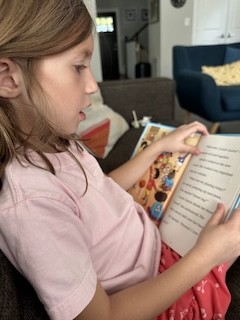Teacher question:
I am working with schools who are strongly committed to the “I Do, We Do, You Do” method of teaching reading, and attempt to use this method when working with the reading of complex texts. I have noticed that this approach doesn’t often exist with “highly aligned curricula.” My questions are: What is the role of modeling as it relates to complex text? What does good modeling look like with a complex text that doesn't simplify understanding of a text down to just using one reading strategy? I would appreciate any insights you have here. Thank you!
Shanahan's response:
Cool question.
I don’t think that is a bad way to think about teaching complex text, I just haven’t usually thought of it that way myself.
The method you summarize as “I do, we do, you do,” is often described as “gradual release of responsibility.” The idea being that initially the teacher takes full responsibility for carrying out a particular task – reading comprehension, in this case – and then through a series of steps relinquishes more and more of the responsibility to the students.
Your teachers are wise to be committed to this approach because it is well supported by research. According to the What Works Clearinghouse, the gradual release approach to teaching reading comprehension has strong research support.
Unfortunately, as effective as this approach can be, it is often badly done. Teachers may turn over the keys to the kids too quickly… sometimes without any modeling or guided practice at all. When done like that, the method is no more than an independent reading assignment. “Go to your desks, read the text and fill out the chart. Good luck!”
Or, teachers may model—like when they read a text to the students—but without adequate attention focusing or explanation. If I read the text and tell the kids what I learned or noticed from it, it is very unlikely kids will be able to duplicate that effort on their own.
As you point out, many programs don’t include this kind of approach, and no wonder. The easy parts of the process are at the endpoints. Initially, when the teacher does all the work it can be scripted, and at the end when the kids do everything, no more is needed than an assignment.
But what about in the middle? How much guidance should the teacher give? How quickly should she turn over the process? How gradual is gradual?
Those decisions are hard because they need to be made on the spot. And, when they are wrong—that is, when it turns out that the kids can’t take the reins successfully—the teacher has to take back the responsibility, for the time being that is.
That’s why I think of gradual release as: I do it, we do it, I do it again, we try to do it again but this time a little differently, we do it, we do it, oops, I have to do some of it with more explanation, you do it (no, not quite like that), you do it, we do it again, okay now you can do it. (I know it isn’t catchy, but it is more descriptive of how the process really tends to work).
So what does that approach have to do with teaching students to comprehend complex text?
First, you have to identify a particular text barrier to understanding that you want to teach. Authors build affordances or barriers to understanding into their texts, and readers have to learn how to take advantage of these or to surmount them. In this case, let’s say you want to teach students how to use context to make sense of a word’s meaning or how to transform a sentence with an independent and dependent clause into two independent sentences to clarify meaning. (The point is to teach kids to operate on the text so that something unclear initially makes sense.)
Then, you need to explain this to the kids and show them how you do it… with several examples. Be sure to show them how you notice that you don’t know the meaning of a word (e.g., “that’s a new one to me,” “oh, I’ve looked that one up before but don’t remember its meaning,” or “I thought I knew that word, but the definition I know doesn’t fit this context, hmm”). Once you’ve noticed this barrier to understanding, then you have to show the kids how you deal with it. Breaking the sentence down or looking for context clues that may clue you in to the meaning of the unknown word.
That’s the “I do it” part of the equation (and, yes, you might have to go back and show these steps again multiple times—even after the kids have tried it themselves).
To start to release control, the kids have to read something under the teacher’s supervision. Of course, the text chosen needs to have some of the potential barriers you’re trying to teach them to overcome. The key here is to have some target problems to home in on.
I usually come up with questions aimed at testing the kids’ understanding of the particular idea expressed in the text that the barrier should have blocked them from. If they can answer the question—if they unpacked the sentence themselves or made the cohesive link or figured out the unknown word—there is nothing to be done. However, if they can’t answer, then you can guide them to figure it out… showing them what to look for or how to operate on the text.
At some point, when the kids are getting better at solving such problems, then you can provide them with reading assignments to do on their own. Such an assignment might include a text along with written questions. That could serve both as independent practice, but also as an assessment. Were they able to monitor their understanding of the text? Were they able to take actions successfully when they weren’t understanding it? Could they show you what they did to figure out the answer to a question?
I haven’t done it that way myself with making sense of complex texts, since I tend to focus more on the “We Do It” portion of the sequence, but the introduction of these tools into the process could allow teachers to raise their game.
One last suggestion: tell the kids right up front that complex text is a problem to be solved or a mountain to be climbed. Explain that you are going to try to provide them with tools that will allow them to make sense of a text, even when they initially couldn't make heads or tails of it. (Too often kids think you either get it or you don’t when it comes to reading; give them some ways to overcome barriers to understanding instead of just giving up.)







Comments
See what others have to say about this topic.